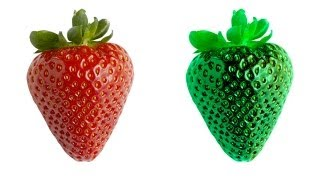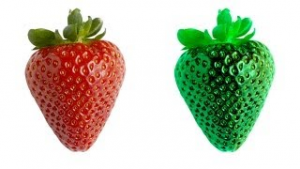 What is seeing? If you are anything like me, you have already come across questions such as “How do you know the red that you see is the same as the red I see?” discussed here on Vsauce by the one and only Michael Stevens.
What is seeing? If you are anything like me, you have already come across questions such as “How do you know the red that you see is the same as the red I see?” discussed here on Vsauce by the one and only Michael Stevens.
The Dress
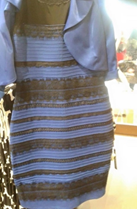
You might also have heard of the picture of the black and blue (or was that white and gold?) dress that went viral a few years ago. If you don’t know what I mean, have a look at the picture on the right and ask a few friends to do the same. Do you all agree on the colour?
See a video here by ASAP Science which discusses the science behind the confusion. And, most of us love illusions like the one below of the young/old woman below.
So, we can be fairly certain that we indeed do not all see the same thing all of the time.
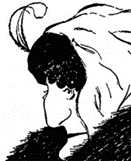
What is Something?
A lot of science is about categorising things. That is a person, that’s a cup, this is my hand and so on. We have rules for how to categorise things. These can be official rules, scientific rules or just rules we have subconsciously decided upon. We might think “That person is a ‘keener’.” because they always do their homework on time and listen well in class, for example. Clearly this is not helpful or linked that close to reality. It would be more accurate to say that they are a person who maybe finds the subject interesting and/or wants to do well in that subject and has the self-confidence to not be shy about it.
categorise things. These can be official rules, scientific rules or just rules we have subconsciously decided upon. We might think “That person is a ‘keener’.” because they always do their homework on time and listen well in class, for example. Clearly this is not helpful or linked that close to reality. It would be more accurate to say that they are a person who maybe finds the subject interesting and/or wants to do well in that subject and has the self-confidence to not be shy about it.
But, what about the more odd question: What is a thing? Look at your hand. Look at your wrist. Where does your hand end and your wrist begin? And, in any case, is your hand not made out of other ‘things’? In which case, does that mean your hand is more accurately a collection of things like muscles, bones, blood, cells, nerves etc? Or maybe we can go the other way: Your hand is part of another larger ‘thing’, yourself. But you could go further and say you are part of a larger thing also, such as a culture, or a family, or a town, or a planet. And then of course, our planet is part of the solar system, which is part of our galaxy and so on. Here’s a video by Kurzgesagt which also discusses the same question.
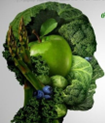 Nutrients?
Nutrients?
If we look at all of the things inside our skin and ask ourselves how much of it is us, it starts to get a little weird. For example, at what point in digestion does food become part of you? Maybe once the nutrients have been extracted and are now floating in the blood stream? Is that still in transport? In which case, is it you once they reach their destination and take part in a chemical reaction somewhere. This new molecule is part of you then? How long does that molecule stay around for?
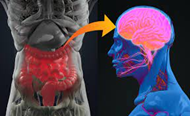 Bacteria?
Bacteria?
And then there’s the bacteria that lives in and on us… Did you know the bacteria cells outnumber the cells that generally consider are your cells by 10 to 1? And a lot of these bacteria cells are very important for us.Research even suggests they contribute quite a lot to our personality! This would mean the person you take yourself to be is partly down to what bacteria is living in your gut! See this video about your bacteria to learn more.
Cells?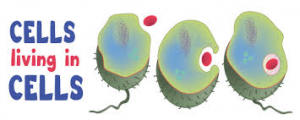
Did you know that the mitochondria in your cells used to be separate independent organisms? They were absorbed by the ancestors to our cells millions of years ago before multicellular life, but instead of being dissolved by the cells they lived on inside the cells. They helped the cell to live and were given a safe place to live and reproduce themselves. This is called symbiosis and there are some very interesting examples of this in nature. Learn more about mitochondria here.
Wait wait wait… What’s all this got to do with seeing?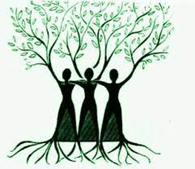
Well, the way how we see ourselves as this independent being separate from our environment drastically affects our decisions about very important matters such as global warming. We see ourselves as having been put on this planet, but in reality we grew out of it. The materials that make up the planet have been used to make up us. What is you and what is not you is constant fluctuation as you eat, breathe and go to the toilet. We are not a constant unchanging permanent separate thing. We are part of this world. How might this change our behaviour towards our planet and towards the people around us?
A bit about the author, Paul H:
 Paul is a qualified and experienced Physics, Maths, and Science teacher, now working as a full-time tutor, providing online tuition using a variety of hi-tech resources to provide engaging and interesting lessons. He covers Physics, Chemistry, Biology, and Science from Prep and Key Stage 3 through to GCSE and IGCSE. He also teaches Physics, Maths, and Chemistry to A-Level across all the major Exam Boards.
Paul is a qualified and experienced Physics, Maths, and Science teacher, now working as a full-time tutor, providing online tuition using a variety of hi-tech resources to provide engaging and interesting lessons. He covers Physics, Chemistry, Biology, and Science from Prep and Key Stage 3 through to GCSE and IGCSE. He also teaches Physics, Maths, and Chemistry to A-Level across all the major Exam Boards.
You can enquire about tutoring with Paul here

